Water heater under the sink - the types and features of the
Repair work plumbing lead to prolonged shutdowns of hot water, the solution to this problem can be an electric water heater. Such units are adapted to urban and dacha conditions, are mounted separately or are included in the washbasin set, have different capacities. With electric water heaters, there is no threat of dependence on centralized hot water.

Water Heater
Even the temporary lack of hot water seriously disrupts the usual way of life. If it is impossible to use a gas liquid or solid fuel boiler, the option of installing an electric boiler remains. Sometimes a capacitive unit is needed, but it happens that one water heater in the kitchen under the sink solves all problems (it is also possible to place it over the sink).
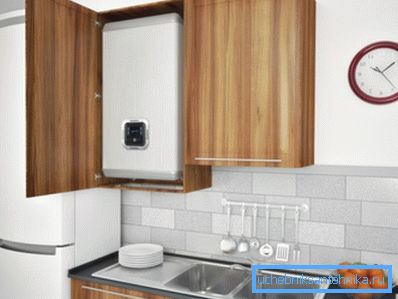
Such a unit is a tank, at the exit of which cold water becomes warm.
The entire model range combines one key detail - heating elements, but there are differences in the structure of electric water heaters, you can select such types of devices as:
- flow type;
- accumulative;
- bulk.
Warm current
The flow through heater is the key point through which water is heated. The minimum power of the device is from 3 to 8 kW, which is suitable for ordinary voltage in the 220 V network. Heaters with a capacity of up to 36 kW will require 380 V, therefore, a significant reconstruction of the house's electrical network.

Low-power boiler heats up to a maximum of 60 ° C a small stream of water. The performance of the low power “protochnikov” reaches 2–6 l / min with a warm-up time of half a minute. Such a sink with a water heater for giving is sufficient for washing dishes and hygienic procedures.
Depending on the type of installation, flow-through water heaters are:
- closed or pressure - mounted in a standpipe, serve several taps and are suitable for centralized water supply;
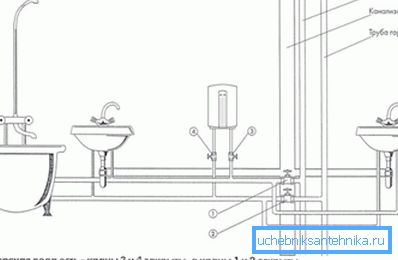
- open - non-pressure, which are responsible for one tap, do not depend on the pressure in the pipeline, require special valves.
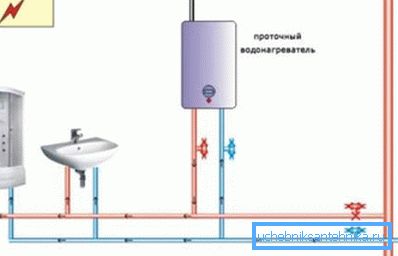
Note! Severe winters in some regions affect the temperature of cold water in the system. This factor can worsen the work of the “proto-processor”. Carefully read the conditions under which the high efficiency of the device is guaranteed.
Flowing "water heaters" have the following properties:
- compactness;
- less scaling;
- instant jet heating:
- high power;
- lead to additional costs for electricity;
- cannot get very hot water.
Note! The manual for European three-phase models contains information on local voltage - 400 V / 50 Hz (220/380 V in our country), the actual power of the imported device will be one-quarter lower than the declared one.
Water in reserve
The volume of the cumulative boiler differs significantly depending on the model; the variation is observed in the range from 5–15 liters to 1000 liters, which is more than enough for any whim.
The same volume affects the way they are installed, you can select the following types of installation:
- wall;
- floor;
- built in.
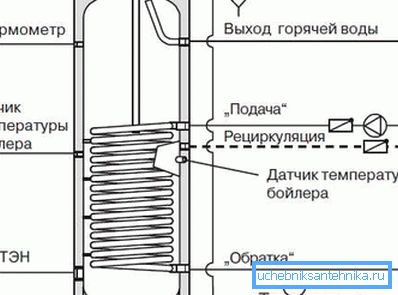
Accumulative electric water heaters of 10 liters for washing or products with a volume of more than 100 liters have a capacity of up to 2 kW. The water is heated to a maximum of 85 ° C and then the temperature is maintained by the periodic switching on of the heating element. For example, an Italian boiler of 10 liters for washing, Ariston with a capacity of 1.2 kW, heats water up to 45 ° C for half an hour.
The same water heater may vary in cost from different manufacturers - it depends on the quality of the materials used. For example, the price of a 50 l boiler with a Elsotherm AV50T copper tank is about 10,000 rubles, and the same volume of the Ariston enameled tank is almost 6,000.
For additional protection against corrosion, the tank is equipped with a sacrificial anode with a service life of up to 7 years, after which it is replaced.
The main problem remains scale, which can be dealt with using:
- filter installations;
- cleaning the heating element.
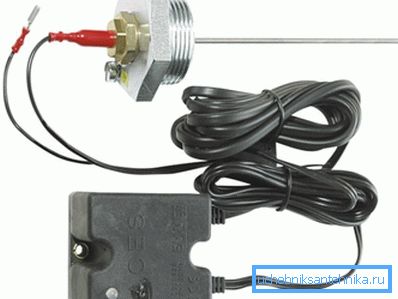
How to make the right choice
In order for the choice not to turn into agony, you need to decide for yourself a number of issues:
- The power of the heating element, which will be reflected primarily on electricity bills.
- The thickness of the insulating layer.
- Unit weight
- For what purposes will it be - a boiler under the sink in the kitchen / shower / bath or all together.
- For a city apartment or cottage.
- Volume of the tank.
The issue of power affects, in the first place, flow-type water heaters. If you do not need large amounts of hot water to wash dishes, then no one will want to limit yourself in the bathroom or in the shower. Therefore, it is necessary to increase the power consumption on average to 8 kW.
This figure may be fatal for wiring in the old house. You will have to invite a specialist and carry out a “branch” with a large cross section especially for the device, install fuses or even change the meter. If we are talking about a large amount of water, it is better to install a storage heater.
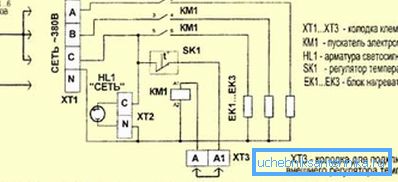
Note! Compare water heaters of the same volume and select a larger one. The large thickness indicates that it has a thicker insulating layer (from 15 to 42 mm). Every millimeter of insulation thickness retains 1.2 ° C of water in the tank.
Calculate the required volume of the boiler can be, knowing the average water consumption at 60 ° C per person and multiplying it by the number of family members:
- for washing dishes - 8–16 l;
- take a shower - from 16 to 30 liters;
- for the bath - 90–180;
- wash - 5–8.

On average, one person needs a 10-liter water heater for a sink to wash dishes and a morning toilet, for two people, this figure will increase to 20–30. Installing water heaters in both the kitchen and the bathroom will allow better control of water consumption for the usual procedures.
Comfortable rest in the country will help create a self-leveling electric boilers, enjoying enduring popularity.
Having a lot in common with "home" boilers, there is a special charm in bulk:
- heating for the summer shower can occur due to solar energy, saving electrical energy;
- country wash with a water heater allows you to fill the tank manually;
- the presence of a thermostat will prevent complete evaporation of water and breakage;
- the choice of a model made specifically for the shower or washbasin.
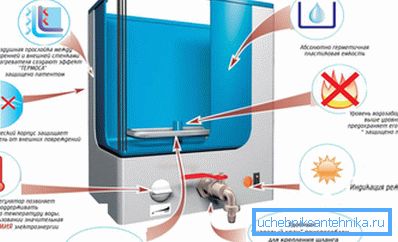
By the type of filling made the boiler and the most low-volume of a number of electric boilers designed for 5 liters. It looks like a cabinet with a tap, on the front panel of which there are hot / cold water regulators.
Boilers, which at one moment are filled from a bucket or canister, have become a familiar detail in offices and cafes. Such a water heater is convenient for 5 liters under the sink and in a regular kitchen, providing the necessary NZ.

As a postscript, you can designate the pros and cons of the “content” of an electric capacitive boiler at home:
- water heater for the kitchen under the sink will always allow you to have a supply of hot water;
- electricity is consumed economically;
- compatibility with existing electrical wiring;
- heating takes time.
- large dimensions "eat up" free space.
Installation - to be or not to be
Regardless of the location of the water reservoir, the process is almost the same. A controversial question can be whether to entrust this matter to a specialist or to do it yourself.
In favor of the work of a professional says the need:
- work with electrical wiring when installing a flow heater;
- calculation of power factors affecting the internal pressure;
- sealing of connections, on which peace and friendship with neighbors depend, and much more.

On the other hand, having some experience, the installation of a water heater under the sink may be within the power of the home master, the work should be carried out in the following sequence:
- Install the mount on the wall and secure the container.
Note! Do not replace the brackets / anchor hooks on which the tank will be mounted. If you use long nails instead of them, then the strength of attachment will sooner or later weaken and the device may simply fall.
- On the cold pipe, marked in blue on the body, screw the non-return valve, and a tap on it.
- Connect the crane with an adapter with a pipe.
- Connect the tap and the switch for connection to the pipe to the hot nozzle (red).
- Unscrew the hoses of the hot / cold mixer on the water pipe.

- Connect with the appropriate layers from the boiler, without over-pulling the threads. For sealing it is best to use tow.
- Connect the electric heater to the network and check its operation.
In conclusion
Installing an electric water heater in a house / apartment is a more necessary and costly measure. The need for this step is fully recognized during the total shutdown of hot water supply, in some cases it can be the only source of water. In the presented video you will find additional information on this topic.
If you decide to install a tank boiler yourself - the video in this article will help you.